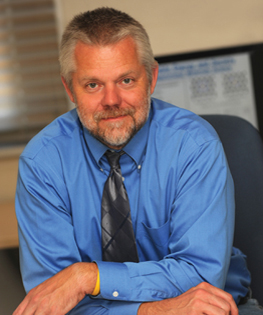Boris Kiefer

Biography
Dr. Kiefer’s research specializes in computational material science. His research uses state-of-the-art simulation techniques to explore and predict electronic, magnetic, and optical material properties. Currently the Kiefer group pursues two major research thrusts:
1) Discover and design novel material solutions for mastering technological challenges. We are particularly interested in controlling topological, electronic, magnetic, and optical properties and envision applications in the areas of (quantum) information, and energy storage/conversion.
Mahatara, S., and Kiefer, B., “Does -PbO2 Harbor Topological States?”, Journal of Physics: Condensed Matter, DOI: 10.1088/1361-648X/ab79fb (2020).
Karpov, D. et al., Liu, Z., Kumar, A., Kiefer, B., Harder, R., Lookman, T., and Fohtung, E. E., “Nanoscale topological defects and improper ferroelectric domains in multiferroic barium hexaferrite nanocrystals", Physical Review B, 100, 054432, DOI: 10.1103/PhysRevB.100.054432 (2019).
Kumar, C. M. N., Dema, K., Baral, R., Tian, Y., Li, R., Poudel, N., Gofryk, K., Barisic, N., Kiefer, B., Ross, J. H., and Nair, H. S., “Large magnetocaloric effect in a frustrated garnet with no long-range magnetic order”, Organic Chemistry. DOI: doi.org/10.1021/acs.inorgchem.0c02074 (2020).
Shi, X., Harder, R., Liu, Z., Shpyrko, O., Fullerton E., Kiefer, B., and Fohtung, E., “Nanoscale Mapping of Heterogeneous Strain and Defects in Individual Magnetic Nanocrystals”, Crystals, 10(8), 658; DOI: 10.3390/cryst10080658 (2020).
Pateras, T., Harder, R., Manna, S., Kiefer, B., Sandberg, R., Trugman, T., Lookman, T. , Kim. J. W., de la Venta, J., Fullerton, E. E., Shpyrko, O. G., and Fohtung, E. E., “Room temperature giant magnetostriction in single-crystal nickel nanowires”, NPG Asia Materials, DOI: 10.1038/s41427-019-0160-8 (2019).
• The Effect of Intercrystalline Water on Material Properties:Plasil, J., Kiefer, B., Ghazisaeed, S., and Philippo, S., “Hydrogen bonding in the crystal structure of phurcalite, Ca2[(UO2)3O2(PO4)2]·7H2O: single-crystal X-ray study and TORQUE calculations”, Acta Cryst. B76, 502-509; DOI: 10.1107/S2052520620005739 (2020).
Plasil, J., Ghazisaeed, S., Kiefer, B., and S. Philippo. Hydrogen bonding in the crystal structure of phurcalite, Ca2[(UO2)3O2(PO4)2]·7H2O: Single-crystal X-ray study and Torque calculations”, Acta Cryst. B76, DOI: 10.1107/S2052520620005739 (2020).
Ghazisaeed, S., Md, M., Nakotte, H., and Kiefer, B., “DFT predicted symmetry lowering from cubic to tetragonal in Nickel Hexacyanoferrate”, Journal of Applied Crystallography, DOI: 10.1107/S1600576719016492 (2020).
2) The Kiefer group has an increasing interest in materials analytics. More specifically we are interested in identifying descriptors that allow for the discovery of materials with novel properties. As a first step toward this goal we have recently published our first data science paper on curation and cross-validation of databases.
Marquez Chavez, J. and Kiefer, B., “MATCOR, a program for the cross-validation of material properties between databases”, Computational Materials Science. DOI: doi.org/10.1016/j.commatsci.2020.110103 (2020).
The Kiefer research group main focus is on materials discovery and design, but also has an interest in quantum information science, including quantum information processing and quantum software development. At present we are interested in cluster-states, final state tomography, and the physics of superconducting transmon and fluxonium qubits.
If you are interested in any of these topics, do not hesitate to contact us. We cannot build a quantum skilled workforce and technological leadership without you.
More articles and publications can be found here.
